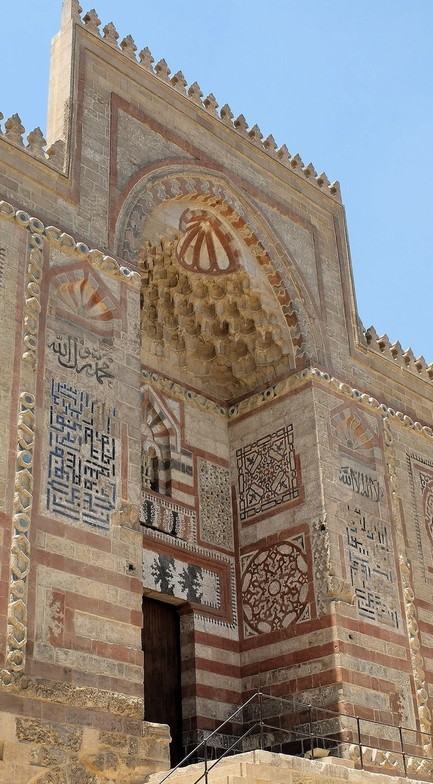
[The purpose of this piece is to respond to recent critics of vitalism and to correct their false assertion that concepts regarding the ‘vital force’ or ‘life principle’ constitute a “repackaging of paganism’’.]
The material organism, without the vital force, is capable of no sensation, no function, no self-preservation; it derives all sensation and performs all the functions of life solely by means of the immaterial being (the vital force) which animates the material organism in health and disease.
[Samuel Hahnemann: The Organon of Medicine, Para 10] [1]
———
The universe exists as meanings wrapped in forms // Whoever perceives this reality is of those of inner discernment
[Sh. Muhammad Ibn Al-Habib, Diwan: Qad Bada]
The Timeless Debate
"Modern medicine is based on the conception of the Universe as a conglomeration of dead matter out of which, by some unexplainable process, life may become evolved in forms. To [Ibn Sina] the whole of the universe is the manifestation of a universal principle of Life, acting through the instrumentality of forms.
Or, again, in modern medicine, the forms are the source of life; to [Ibn Sina] they are the product of Life. Space itself is an aspect of the one Life. "
- Cameron Gruner, translator of Ibn Sina's Canon
One thing we must understand in the dialectic between vitalists and allopaths is that this back-and-forth has been happening for centuries. This recent spat between their respective representatives is nothing new; just another page in the ancient saga.
Going back to the Greeks, who differed on the fundamental nature of the human being as well as the most appropriate means of addressing disease in the human constitution, physicians from time immemorial have been debating and arguing these points. An iteration of this fierce debate is captured in the history books and expounded on in Harris Coulter's formidable four-part work Divided Legacy [2], where the famous battle between Hippocrates, a vitalist, and Democritus, an atomist and proto-allopath of this time, who did not believe there was any subtle dimension of existence beyond 'indivisible atoms', decried Hippocrates who was known for his rigorous scientific approach while yet steadfastly maintaining a traditional vitalistic metaphysic in his clinical paradigm. Yes, this is the same Hippocrates that both vitalists and allopaths today take their oath from in their white coat ceremonies. I imagine the irony is not beyond you at this point.
These differences in metaphysical conceptions are not nominal; philosophical paradigms in medicine dictate not only the clinical approach of the medicine but also what is possible. Depending on the framework and the framing of the subject, 'facts' operate differently and hold contrasting value and meaning. For example: a symptom presentation of acid reflux means something very different in an allopathic model than in a vitalistic model and is reflected in both the diagnosis and treatment. One of the great insights of the philosopher Thomas Kuhn, explored in his seminal work 'The Structure of Scientific Revolutions' [3], captures this reality when he says, "The competition between paradigms is not the sort of battle that can be resolved by proofs."
What he is saying is that at this level of discourse, 'evidence', like what is commonly invoked by allopathic-minded people when trying to delegitimize their vitalistic counterparts by demanding biochemical mechanisms of action and double-blind placebo-controlled studies of mechanistic evidence as proofs, is false and improper. It is improper because the very models by which these 'evidences' hold meaning are what are being challenged in the first place. Vitalism is a competing paradigm. This is vital to understand.
And if it is not understood, people being either unable or unwilling to engage at this level of discourse inevitably close the door on the possibility of rich, engaging dialogue between the two camps, usually resorting instead to a status quo of endless strawman fallacies and diversions. This ends up with two camps speaking two different languages at (not to) one another, instead of finding a common language and attempting to engage the matter directly at the root level of the disagreement. As Kuhn also relates, those in the Middle Ages convinced by and living in the helio-centric model of the universe could never really be met by those entrenched and insistent on remaining in the old scientific guard of geocentricism; the latter using the language of authority (or consensus) to bypass (and even censor) reason as well as the new emerging science of the time.
The idea that there only exists an “evidence-based medicine” that reduces the patient to their biochemistry and only acknowledges pharmaceutics as the sole legitimate medical intervention, all the while rejecting vitalism, the body-mind connection, the centrality of gut health, and the vast armamentarium of non-pharmaceutical modalities is pure fantasy and delusion. Reductionist medicine is evidence of something gone terribly wrong and serves as but an extension of the ideological zeitgeist of the collapsing monoculture we are living in.
With that, I'd like to dive a bit more into the doctrine of vitalism.
Unpacking Vitalism
Firstly- what is vitalism? Vitalism is the doctrine that declares that the animal functions of a living organism is essentially mediated by a vital principle/life force that is immaterial and distinct from biochemical forces. [4] The opposite doctrine is that of materialism, which is the belief that no animating life principle exists beyond that which is physiochemical and measurable.
Why this is important from a medical perspective, and why it can be such a contentious topic, is because entire systems of diagnosis and treatment depend upon the particular perspective that a doctor perceives the patient through. The medical paradigm, built on a particular conception of Man and the World, is the filter by which all clinical observations, conclusions, and interventions are based on. This may sound technical and out of reach for the non-practitioner, but it is vital that everyone understands the importance of a physician holding a sound framing of the clinical reality- it is in fact a tremendous amana (trust).
Philosophy dictates praxis. If the practitioner ideologically and/or operationally perceives the human being as nothing but a machine, a bag of biochemistry and disjointed parts, then the diagnoses and treatment methods used will go no further than biochemistry and the mere suppression of symptoms. If the practitioner believes and sees the human being as a living entity, infused with spirit and interconnected within all his/her parts, then the diagnosis is holistic and the treatment interventions are tailored to address the individual totality of the human economy and the root causes of their ailment.
Needless to say, Muslims are essentially vitalists in creed and traditionally vitalistic in practice. It is a doctrinal aspect of our theology, as we are people who believe in the ruh, the spirit, as well as the unseen spiritual worlds that the material world is nested within.
Allah states in the opening verses of Surah Al-Baqara:
Alif-Lam-Mim.
This is the Book in which there is no doubt; a guide for those conscious of Allah.
Those who believe in the Unseen, establish Prayer, and spend from that which We have provided them.
And who believe in what has been revealed to you [ O Prophet] and what was revealed before you, and are certain in the Hereafter.
It is they who are upon right guidance, and it is they who are successful.
[Quran, Al-Baqara/The Cow: 1-5] [6]]
Muslims believe in the immaterial and unseen realms of existence and the strength of that belief is connected directly to those 'who are conscious of Allah' and 'upon right guidance'. We are not materialists nor do we believe in any version of physicalism or positivism that rejects the subtle nature of Creation.
To demonstrate this further, I would like to look at the cosmological unfolding of existence, from Creator to His creation. Taking the concept of amr (command), for example, our scholars teach us that it is Allah's a priori amr that precedes the phenomenological existence of any thing. The command then moves through the spiritual worlds (al-malakut), mediated through the angels (mala’ika) until finally flowing into the material world (al-mulk) as the final locus of manifestation (mazhar) of Allah's will. [7]]
Indeed your Lord is Allah Who created the heavens and the earth in six Days, then established Himself on the Throne. He makes the day and night overlap in rapid succession. He created the sun, the moon, and the stars—all subjected by His command.
The creation and the command belong to Him ˹alone˺. Blessed is Allah—Lord of all worlds!
[Quran: Al-A'raf/ The Heights: 54] (emphasis mine) [8]
In line with this cosmological reality, the ontological nature of the human being follows. The human being is a mazj, an amalgamation, of ruh, jism, and nafs, or spirit, body, and soul, respectively. There are differences of opinion in regards to the nature of the interconnectedness of these aspects of the human composition; yet, the general understanding is similar to the cosmological understanding; that existence of all created, contingent beings is willed by Allah, His amr flowing through the ruh, and finally crystallizing into the body-mind which we can call the nafsani-jismani self. There is an upwelling of life and expression, in every moment, that passes from through the most interior aspects of the human being, to the most exterior.
The well-known, rigorously-authenticated hadith narrated by Imam Bukhari captures all these meanings:
Verily, there is an organ in the body; if it is goodly the whole body becomes goodly and if it becomes corrupted, the whole body gets corrupted– alas, that is the heart. [5]
This hadith is beyond majestic and its profundity continues to unfold over the years I reflect on it. The main reflection I want to draw upon here however is the connection between the physical body and the spiritual heart, as that is how the scholars understand ‘heart’ in this hadith; Imam al-Ghazali calls it the latifya rabbaiyya ruhaniyya, or a ‘subtle tenuous substance of an ethereal spiritual sort. Imam al-Ghazali even goes as far as to emphasize that the reality of this ‘heart’ is not merely the ‘cone-shaped flesh’ located towards the left side of Man’s chest, but a subtle reality that pervades the whole body and constitutes the link between well-being and corruption of the organism.
This is what we call a vitalistic metaphysical understanding of the nature of Man. Islam, and by extension Hikma medicine, is inherently and non-negotiably vitalistic in its worldview. And indeed one cannot read any of the seminal or contemporary texts of Hikma, Tibb Unani, or Prophetic Medicine without smelling the fragrant scent of vitalism throughout.
Vitalism In The Tradition
"It is this view [of Avicenna] that makes the ancient work fall in line with the most modern. Its consequences are far-reaching. The external configuration of the body, including the physiognomy, is a reflection of the functional capacity of the internal organs and general make-up of the individual. The character, talents, physical form, shape of individual features general development, and indeed every detail of the physique, length of limbs, of fingers, cutaneous markings, contour of the eyes and ears, etc, are all part and parcel with the functional conformations of the viscera, and the mental characters; a study of the visible will inform of the nature of the internal conformation.
More than this, there is the conception that the internal organs belong to one another beyond the anatomical limits. The heart, to anatomy, is a circumscribed organ; to Avicenna it is part of a force occupying the whole body. "Man's heart is both corporeal and incorporeal". So, again, the liver is simply; a visible portion of a "liver " whose operation pervades the whole body. Or, to combine modern with ancient knowledge, the physical heart, the arterial vessels, and the sympathetic nervous system, including the connections between this and the sensorium and that which corresponds to the " sensitive soul " in its emotional aspect, for instance—all this is one great composite ; and its state is also reflected in many subtle indications which offer themselves to the keen observer of the patient."
~ Cameron Gruner
It is a patently false assertion to claim that the concepts of vitalism, the 'vital force' or 'life principle', are un-Islamic, or more- pagan. One cannot read Ibn Sina, al-Farabi, Ibn Qayyim, Imam al-Ghazali, Ibn Khaldun, Ibn Arabi or any of scholarly metaphysicians of our tradition who spoke of the philosophy/theology of medicine without the language of al-ruh al-haywanniy (the animal spirit), al-ruh al-tabi'i (the natural spirit), or some similar iteration of the concept being used.
The term 'vital force' is simply the English term for this same reality and has been the preferred term of English-speaking philosophers of medicine for centuries. Other terms used in the varying vitalistic schools throughout the world include chi, prana, physis, élan vital, orgone, innate energy, and so on. These terms can be considered as generally interchangeable, though tremendous nuance exists within the schools; this latter point, however, is beyond the scope of this specific exploration. I personally refer the term ‘life force’ over 'spirit' when speaking in English because it differentiates the animating principle from the higher subtle essence of the ruh, sometimes called al-ruh al-malakuti (the celestial spirit) which is the domain of Sufism (tasawuuf) and the ‘physicians of the heart’.
Imam al-Ghazali speaks about these two aspects of the ruh in book 21 of the Ihya, The Marvels of the Heart [9]:
[As for] the ruh, it is also used with two meanings relevant to our purpose. One of these [meanings] is a subtle body (jism latif) whose source is the cavity of the physical heart, and which spreads by means of the pulsative arteries to all the other parts of the body. Its circulation in the body and he overflowing from it of the light of life, sense perception, sight, hearing, and smell to the members of the body resemble the flood of light form a lamp that is moved around throughout a house… Whenever physicians use the term 'spirit' they have in mind this meaning, which is a subtle vapor produced by the heat of the heart… the purpose of physicians of religion who treat the heart that it ma be led to the Lord of the worlds has no connection at all with the explanation of this 'spirit'.
Through this we can see the great Imam expound on this subtle body, or jism latif, and its jismani (physical) reality, as well as see how he differentiates the physical aspect of the ruh which is more involved in physiological function, sense perception, health and disease, from the spiritual ruh, which he later describes as amr 'ajeeb rabbani.
A more contemporary Islamic philosopher, the legendary Syed Naquib al-Attas, may Allah preserve him, also expounds on this in his 'Prolegemena to the Metaphysics of Islam' [10]:
"The soul possesses faculties or powers (quwwa) which become manifest in its relation to bodies. In plants they are the powers of nutrition (al-ghadhiyyah), growth (al-namiyyah), and generation or reproduction (al-muwallidah). These powers, in their general and not their specific senses, exist also in animals; and in man, whose body belongs to the animal species, there are powers of volition or action at will (al-muharrikah), and perception (al-mudrikah) in addition to those of nutrition, growth, and reproduction.
All of these powers belong to the soul, and in view of their common inherence generally in the different bodies as well as their separate inherence specifically in accordance with the natures of the different species, the soul is somewhat like a genus divided into three different souls respectively: the vegetative (al-nabatiyyah), the animal (al-haywaniyyah), and the human (al-insaniyyah) or the rational (al-natiqah)."
Building on the Ghazalian framework Syed Naquib drills even deeper and differentiates the varying faculties of the subtle, vital body into unique ruhani principles relating to the vegetable, animal, and higher Adamic realities. The deeper one dives into these discourses, the more one realizes the profound depth, complexity of thought, and nuance that these giant intellectuals were speaking from. The vital force is not some lazy concept thought up by some New Age hippies on an acid trip. The doctrine of vitalism was, and remains, the central organizing principle of any discourse relating to the nature of the human being in the Islamic intellectual world.
And by central, I mean central. We are not talking about 10th century revivalism here, wherein some may claim that much of these later ideas were blindly-adopted and Islamicized from the Greeks. One can find teachings going back to the Sahaba, the Companions of the Prophet Muhammad ﷺ, themselves wherein the redolence of vitalism can be sensed:
‘Iyad b. Khalifa related that he heard ‘Ali (Allah be pleased with him) say at Siffin:
‘Intellect is in the heart; mercy is in the liver; pity is in the spleen; and breath is in the lungs.’
[Bukhari, al-Adab al-Mufrad] [11]
It is a common understanding in holistic vitalistic paradigms all over the world that physiological organs not only have physical functions (quwwat) but also psycho-spiritual (vital) correlates. This is what Imam Ali, the Gate of the City of Knowledge, may Allah ennoble his face, is speaking to above. Different vitalistic paradigms may vary slightly in how they associate certain spiritual powers to particular physical organs, but this speaks to the richness and diversity of the varying vitalistic schools, akin to the diversity we find in our schools of fiqh and tasawuuf, and actually serve as further proof for vitalism. As opposed to being any real grounds for criticism, usually reductive in its nature, these systems of medicine, taken holistically, speak to the totality of the human mazj in their own manners and languages, whilst seeking the same ends and objectives of real lasting well-being for its subjects.
I want to note that I am not cherry-picking these examples. I am choosing examples of the most highly respected and normative scholars of ancient and modern Islamic philosophical thought; and know that we can bring many more examples if necessary. However, I do believe that these examples should serve as sufficient proof of a normative vitalistic conception of the human being, ontologically and within the domain of Hikma medicine. Again, and for the sake of clarity, there is absolutely nothing inherently pagan about anything of this discussion. Maintaining this accusation at this point implicates some of the greatest Ulama and Awliya of our Ummah of perennialism and “repackaging paganism”, which I don’t believe the critic intended; yet he and his tribe have to confront this dilemma.
Setting The Record Straight
Vitalistic paradigms of medicine are the original models of medicine. Not just romantically historical. Not merely traditional like a 19th century Ottoman jubba. Original, in the fullest and most respectful sense. We can even say vitalism is orthodoxy in regards to Islamic cosmology, ontology, and medical philosophy; adopted and incorporated by the greatest scholars of this Ummah through over a thousand years of rigorous intellectual debate, vitalism has earned its keep. And any claim to the contrary must come with tremendous and rigorous evidence to its aid.
What one realizes when one studies the history of medicine, objectively without biases and internal resistance, that every system of medicine that has lasted to this day- Traditional Chinese Medicine, Ayurvedic Medicine, Homeopathy, Tibb Unani, Herbalism, Indigenous forms of healing, etc- are all vitalistic. The only system of medicine today that is not vitalistic is the Western industrial allopathic model, maintaining the materialist, reductionist stance of Democritus and his ilk to this day. This is a fact. And I say this not as a way of mocking or ridicule, but because it is the truth and it must be said. And I totally believe, with every fiber of my being, that we- as Muslims- can make a more formidable and beneficial contribution in medicine if we would only return to what we were upon.
Hikma medicine is the name of traditional medicine. Hikma means wisdom. And what is true wisdom? Syed Naquib Al-Attas, may Allah preserve him, explains: "To know how to put what knowledge in which place is wisdom (hikma). Otherwise, knowledge without order and seeking it without discipline does lead to confusion and hence to injustice to one's self."
The attempt of the Hakim, the practitioner of Hikma, is to learn the manner and interconnectedness of all things. Blending first principles (reason) and empirical observation (empiricism), within the sound contours of an Islamic metaphysic (Revelation), the call of the Hakim is to restore order and integrity to not only human beings and the rest of creation, but even paradigms of thought. The Hakim’s role though is to not edge out competing paradigms and gain ascendency for their own selfish vision; by Allah, no! The role of the Hakim is to attempt to restore the health of all things, including ideologies and paradigms, by the will by Allah, to a manner that is inline with nature and the Will of the Lord of nature.
Concluding Thoughts
In conclusion, I pray this serves as a clarification for those confused by the term vitalism and/or who may have begun to believe that indeed vitalism was a type of “repackaged paganism”. In regards to the interlocuters and critics, I hope that through the framing laid out in this monograph we can finally begin to have real meaningful intellectual discourse about our disagreements at the roots of this affair; namely, the philosophical and ideological differences between the paradigms that we espouse. There is no benefit in debating host theory vs germ theory, polypharmacy, the dilemma of modern iatrogenic disease, the place of homeopathy and other vitalistic modalities, or our different takes on the vaccine issue if we cannot first genuinely explore the disagreements we have on the more foundational elements of the divide.
Abu Huraira reported: The Messenger of Allah ﷺ said, “Wisdom is the lost property of the believer. Wherever he/she finds it, he/she has most right to it.” [12]
We ask Allah Most High to open up our hearts, the locus of intellect according to Imam Ali rather than the brain, to true wisdom, discernment, and understanding.
And Allah taala grants tawfiq.
Dr. Mazen Atassi
Founding Director, Naturopathic Doctor, Homeopath, Somatic Trauma Counselor & Hikma Educator
Contact Me


